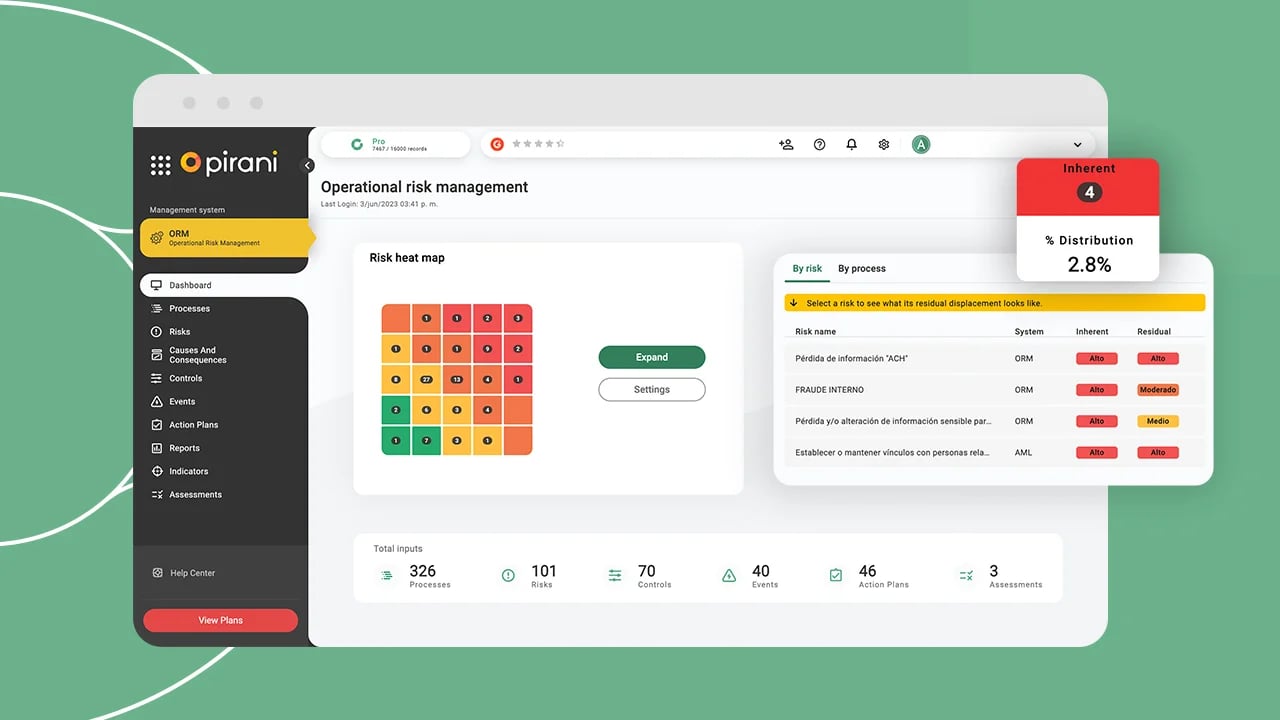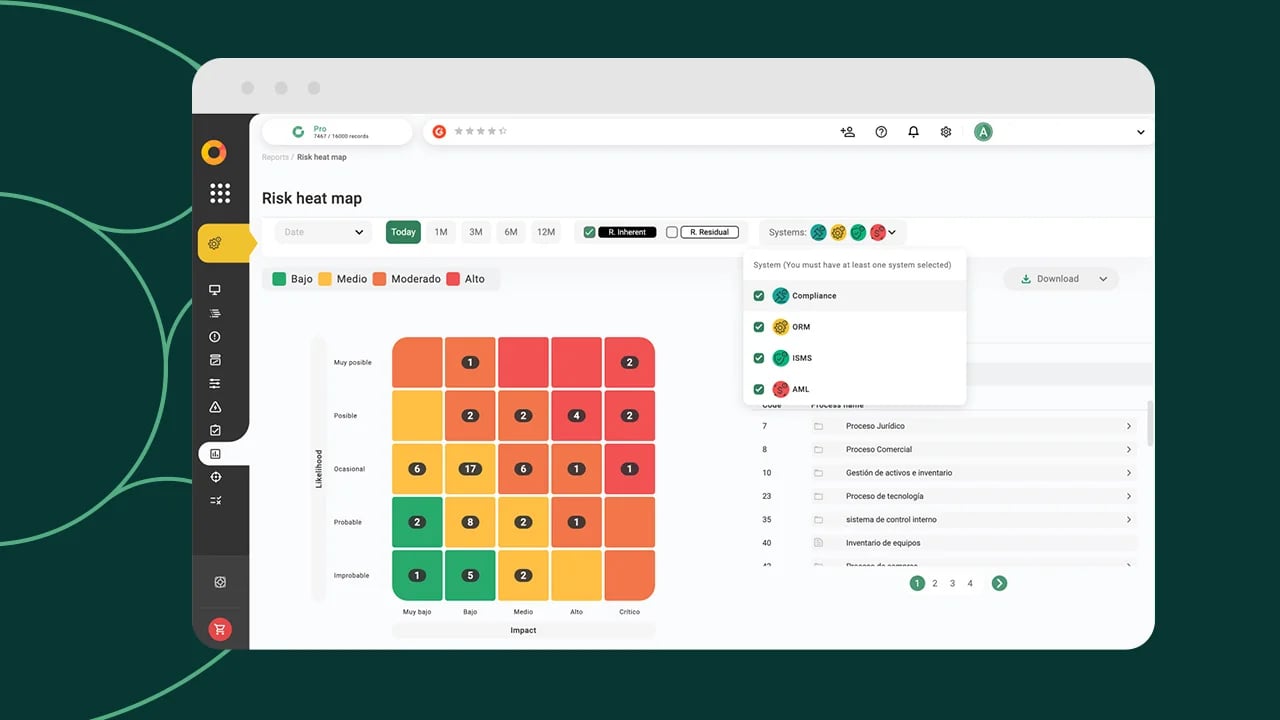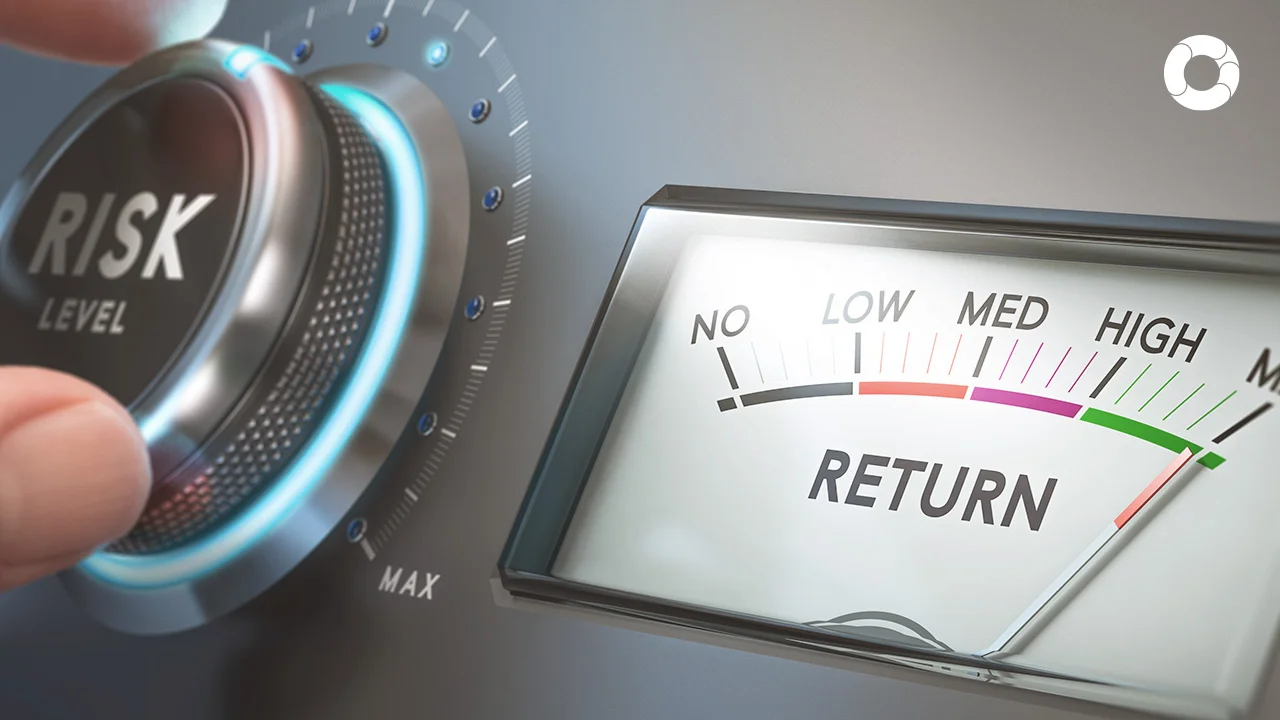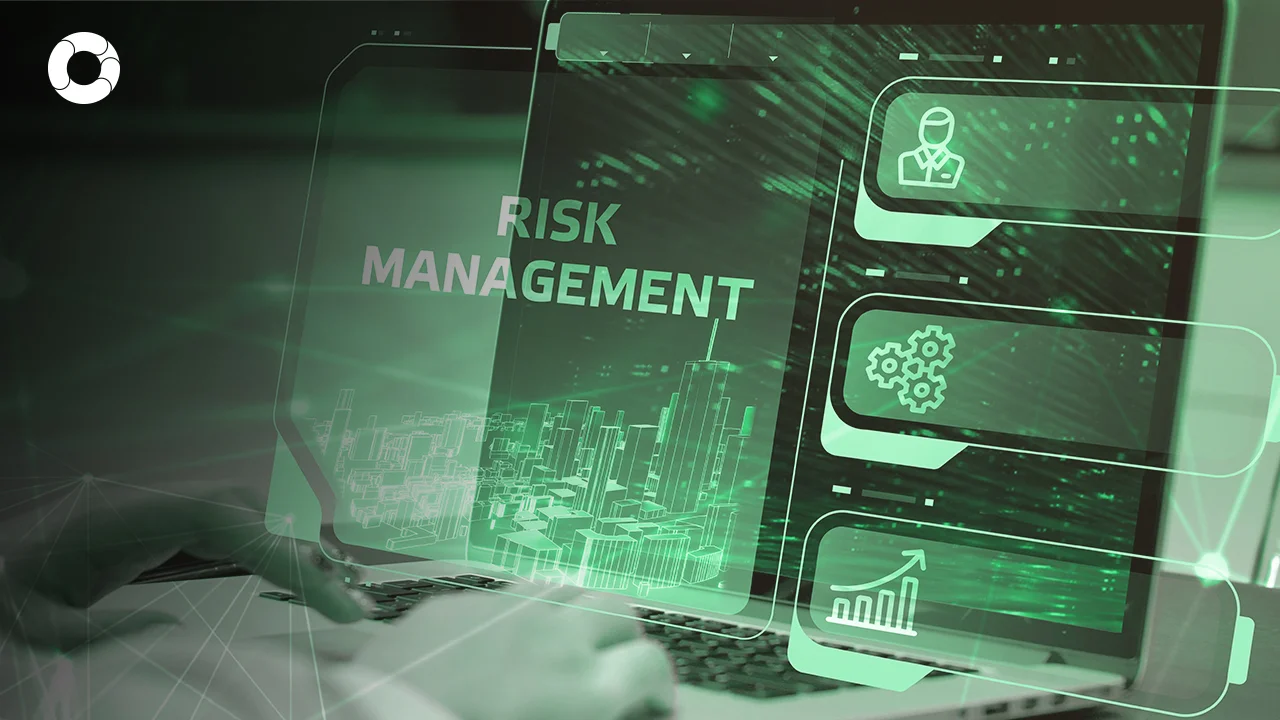How To Create a Risk Assessment Matrix? Step-By-Step Guide

Do you need help controlling or managing business risk? Are you starting a project and need to visualize the potential hazards? Creating a risk control matrix could be the solution.
A risk management matrix is a visual tool that allows business organization members to pinpoint potential risks that threaten to achieve business objectives. Its purpose is to give companies a clear idea of the obstacles they might face and how to mitigate their impact.
In this post, we tell you everything you need to know about the risk management matrix, the reasons for using it, its advantages, and how you can elaborate in simple steps.
Let's dive in!
What Is a Risk Control Matrix?
A risk control matrix is a visual tool for analyzing and prioritizing potential hazards. A matrix is usually represented in a chart with three key categories: risks, impact, and likelihood.
Risks
Risks are those unexpected and undesired facts or events that can cause the suspension, delay, or interruption of a company's activities and, therefore, the achievement of results. These affect critical factors for developing operations, transactions, or execution of a project, etc. Such as people, raw materials, transportation, security, resources, technology, etc.
Impact
The following risk levels are reflected below, representing how severe the impact will be for the business organization if the hazard materializes (suspension or interruption of activities).
Probability
The following key row that a proper risk management matrix must contain is how likely the event is to occur; if there were no such probability, there would be no reason to place the risk in our matrix.
Now let's see how to build your matrix!

5 Easy Steps to Build a Risk Assessment Matrix
Here's how to effectively create a matrix to optimize your business risk management: let's get started!
Step 1: Identify risks
To do this, you need to gather information from your activities, review your risk history, view reports from previous internal and external audits, view reports from your risk management team, and, most importantly, communicate with your employees. Risks may include natural disasters, human error, cyber-attacks, raw material shortages, supply chain issues, regulatory non-compliance, etc.
Step 2: Determine the likelihood of occurrence
Establishing how likely a risk is to materialize (very unlikely, unlikely, possible, likely, very likely) will depend on a review of the risk history, the opinion of experts in the area to which the risk pertains, and even geographic location. For example, if your business is in an area prone to hurricanes or storms, the likelihood of natural catastrophes will be higher.
Step 3: Examine the impact of each risk
These often range on a magnitude scale from insignificant, minor, moderate, major, and catastrophic. Determining how serious a risk will be for the company will depend on how easy it would be to recover and the chain of events it triggers, e.g., financial losses, reputational damage, lawsuits, legal liability, criminal charges, etc.
Step 4: Establish the risk level
To do this in Pirani, we recommend using a scale from 1 to 5 to rate each identified risk. From the highest probability and impact, the number will increase. It allows you to prioritize the risks and focus on creating control strategies for the more likely ones.
Step 5: Create a matrix for business risk assessment
In this step, it is up to you to take the information obtained and put it in to communicate it to the rest of the members. Place in the first column each of the risks (Risk 1, Risk 2, Risk 3, etc.); in the upper columns, place frequency, and in the next column, the impact. Fill in the cells with the information obtained.
To map the risks, you can place the probabilities downwards in the first cell of each row, the impact in each column, and place the risks accordingly.
Pro tip: use a color scale to identify risks according to their level of impact and frequency (green, yellow, orange, and red).
Learn more about why you should elaborate on them; read on!
Bonus
Pirani: Automated Control and Monitoring
Pirani is a specialized risk management software that centralizes information in one place from audit reports and risk history and can be configured and customized according to national and international policies and regulations to be complied with. It facilitates the identification of risks, which then allows the creation of risk indicators; from there, the tool displays intuitive heat maps that reflect the likelihood and impact of risk. It also displays graphs to see the company's strength and control over the risk and its risk profile score, controls, and action plans to mitigate them, all with real-time monitoring.
Find out more about it!
6 Advantages of Developing a Risk Management Matrix
The elaboration of a matrix for the correct risk assessment has multiple benefits, among which the following stand out:
- Knowledge of the risks: this is an excellent mental exercise for the organization's members, which makes them think about those critical elements for its healthy functioning, such as people, operations, resources, etc. See what could hinder your work cycle from continuing.
- It helps prioritize risks: visualizing the level of impact a risk would have on the company helps members decide which risk needs immediate attention and use their resources to mitigate it.
- It facilitates risk communication: the risk matrix not only lists the risks identified but, in a common language and in a simple way, allows all organization members to understand the risks to which they are exposed quickly.
- Empowers decision-making: it is a solid basis for informed decision-making, providing accurate data and analysis rather than mere guesswork or intuition.
- Optimizes resource assignment: once the high probability of a risk materializing and the severe consequences it would have been known, the company can invest more resources to mitigate them and less in those whose impact and probability are lower.
- It improves regulatory compliance: it helps company members review internal policies and regulatory protocols to avoid legal and financial consequences.
Pro tip: periodically review your matrix to ensure it is relevant and up to date, that no new risks have emerged, or potential consequences have changed.
Have you already made your risk control matrix? Do you use any software to elaborate on it?
See Pirani in action!
You May Also Like
These Related Stories

Operational Risk Assessment: Easy Guide

Step-by-Step Guide: How to Create a Risk Matrix

How to make a risk matrix for your company

Crafting Risk Management Plan: Step-by-Step Guide

Trends and Future in Operational Risk Management

Comments (3)